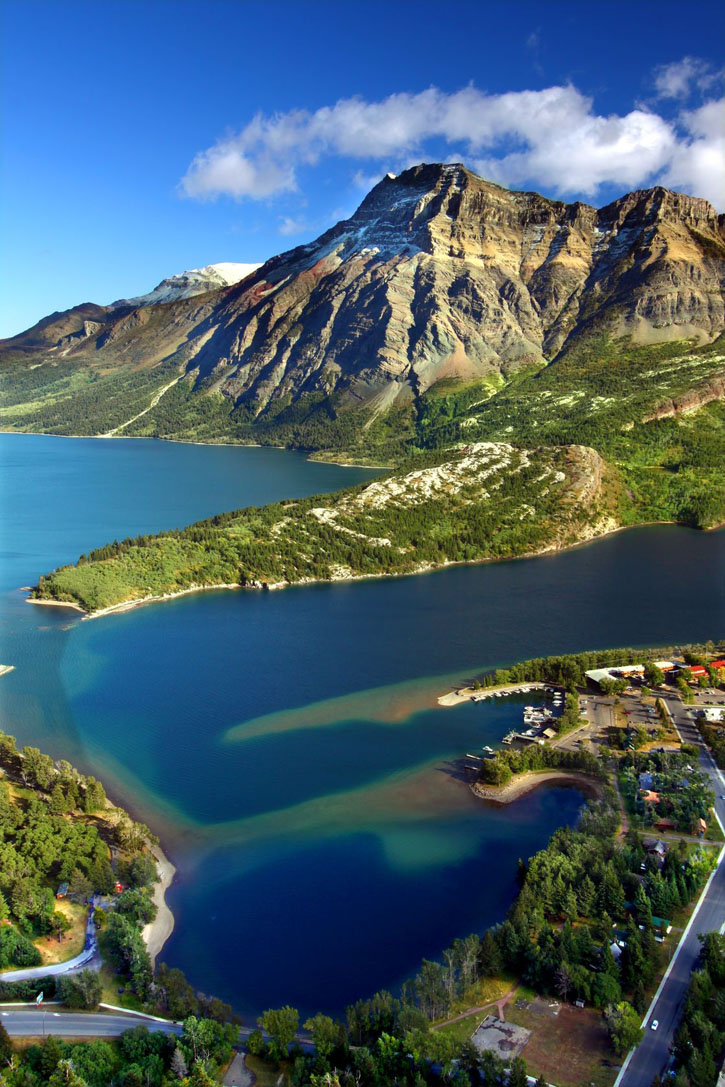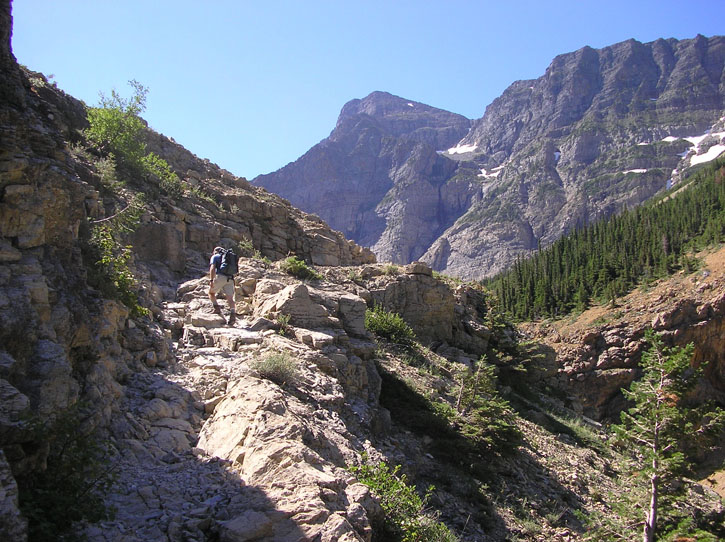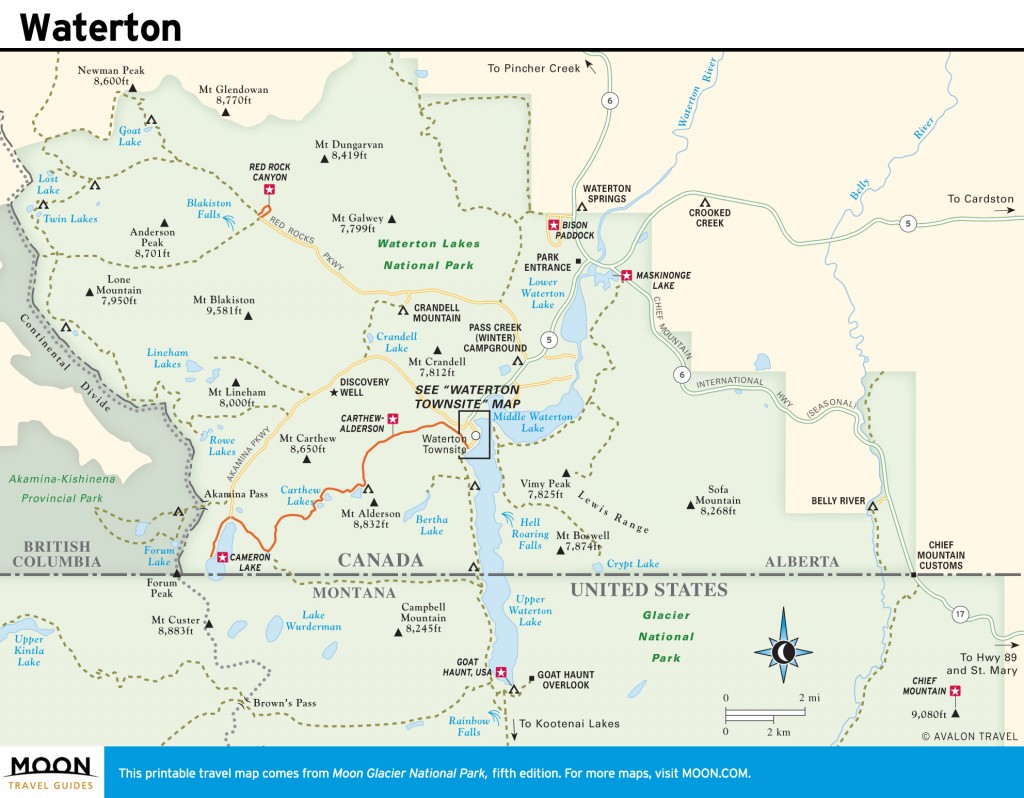
Sweeping view over blue waters and rugged mountain peaks of Waterton Lakes National Park in Alberta, Canada. Photo © Jason Ross/123rf.
Despite its tiny size, Waterton is a nexus. The park is on a narrow north-south wildlife corridor and is at the axis of two major migratory bird flyways. Over 250 bird species nest or use the park’s rich habitat for migration stopovers. It is one of the last places in North America where grizzly bears roam into the fringes of their original grassland habitat. Over 45 different habitats shelter 10 species of amphibians and reptiles, 24 species of fish, and 60 species of mammals. Rare trumpeter swans nest here, as do Vaux’s swifts.
Because arctic and Pacific weather systems collide at Waterton, a breadth of vegetation abounds. With more than 1,370 plants, mosses, and lichens, Waterton is home to more than half of Alberta’s plant species, 179 of which are considered rare and 22 of which are found nowhere else in the province. Moonwort, a small fern, grows in eight varieties; one is found only in Waterton. The park’s diminutive acreage has more plant diversity than the much larger Banff, Jasper, Kootenay, and Yoho parks combined. Because of its extremes and such rarities, the United Nations Educational, Scientific, and Cultural Organization (UNESCO) has named Waterton a Biosphere Reserve and a World Heritage Site.
Waterton’s 52 square miles are tiny compared to Glacier. The Townsite is at 4,200 feet in elevation, but surrounding peaks climb to 9,000 feet. While the Townsite is home to about 100 people in winter, in summer it balloons to nearly 2,000 residents. The park sees about 400,000 annual visitors—about 20 percent of Glacier’s crowds.

A hiker ascends a rocky canyon in Waterton Lakes National Park, Alberta, Canada. Photo © Chris Murphy, licensed Creative Commons Attribution No-Derivatives.
Waterton and Glacier meet at the 49th parallel, which is the international border, yet the parks are connected because they form one ecosystem, recognized by UNESCO as a World Heritage Site and a Biosphere Reserve. Humans can cross between the two via Waterton Lake, and grizzly bears roam back and forth. The two parks, which include part of the longest undefended border in the world at 5,525 miles, form Waterton-Glacier International Peace Park.
As Waterton Lakes National Park sits on the Canadian side of the border, you will need a valid U.S. passport, passport card, or NEXUS card to visit the park. The border crossing is small and generally very speedy; remember you’ll need your identification to cross back into the U.S. after your visit.
U.S. park passes are not valid in this Canadian park, although many Americans expect them to be. Even though Waterton-Glacier is an International Peace Park, no combined park pass is sold. To enter Waterton, you must purchase a separate Parks Canada day pass valid until 4pm the following day (C$4-8 pp, single-vehicle group C$20). For multiday visits, the annual Waterton pass might be more economical (C$20-40 pp, single-vehicle group C$99). For those visiting multiple Canadian national parks, a one-year Parks Canada pass is valid for entry to 27 national parks in Canada (C$34-68, single-vehicle group C$137). Children under six are admitted free, and senior discounts are available. Admission to the park is free on Canada Day (July 1) and Parks Day (July 17). The entrance gate is open 24-7 year-round, but only staffed early May-early October.

Waterton
Excerpted from the Fifth Edition of Moon Glacier National Park.